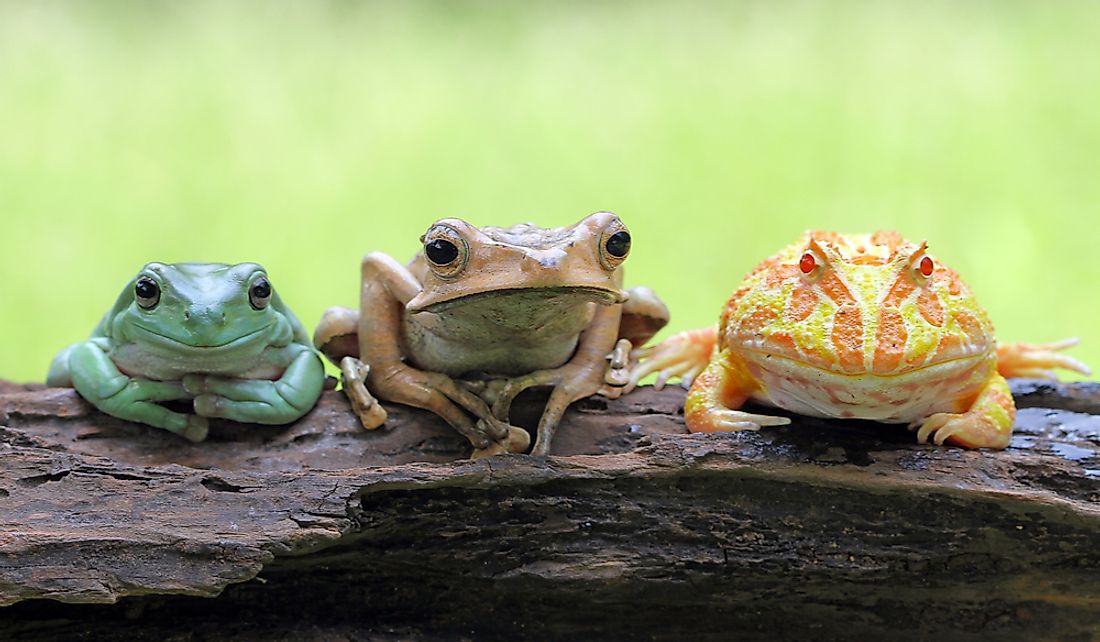How Many Species Of Amphibians Are There?

Amphibians are ectothermic and tetrapod vertabrates species that depend on water or a moist environment to survive. The total number of amphibians identified throughout the world is estimated to be about 7,000, and about 90% of this total are frogs. The number of species in each group of amphibians varies depending on the source. Despite the massive number of amphibian species, these vertebrates exhibit similar characteristics, as discussed below.
Classification of Amphibians
Amphibians are classified into three major groups: Anura, which is composed of frogs and toads; Caudata, which is composed of newts and salamanders, and Gymnophiona, which is composed of caecilian species. The smallest living amphibian is a frog from New Guinea, known as Paedophryne amanuensis, which is also considered to be the world’s smallest vertebrate. The Chinese salamander is currently the largest amphibian in the world, with an approximate length of 1.8 meters. This species lives only on the rocky mountain streams and lakes of China.
Amphibian Habitats
The majority of amphibian species are known to undergo metamorphosis, which means that they start living in water, but can survive entirely on land as they mature. The term amphibian is adapted from an Ancient Greek word meaning "both kinds of life," which refers to the fact that the animals could survive both on land and in water.
Characteristics of Amphibians
All amphibians are classified as cold-blooded animals, called ectotherms, which means they cannot control their internal body temperatures due to their small internal physiological heat sources.
Some amphibian species, such as small frogs and terrestrial salamanders, lack lungs and thus depend entirely on their skin for respiration. In addition to being used for respiration, the skin of an amphibian also contains special glands that are used for the production of proteins. Some amphibians also have skins that can fight both bacterial and fungi infection. All amphibians have moist and scaly skin that is used for absorption of water and oxygen. This type of skin can be disadvantageous since it makes amphibians vulnerable to dehydration. For example, too much sun or extreme wind conditions can dry the skin and cause dehydration.
Additionally, amphibians are vulnerable when their habitats are interfered with or contaminated by chemicals. Amphibians, especially frogs, face a high risk of extinction due to the destruction of their natural habitats.











